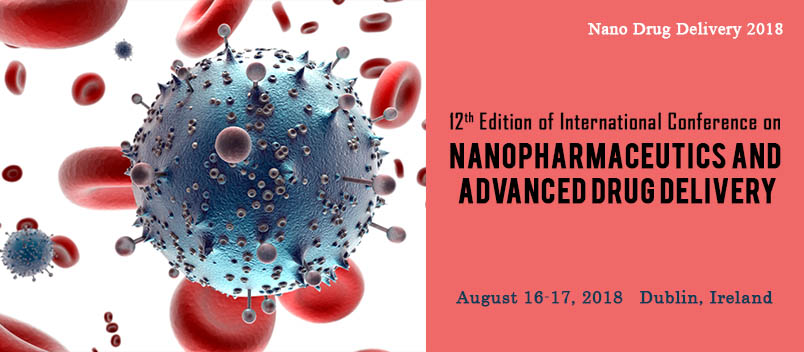Commentary, J Bioeng Med Technol Vol: 3 Issue: 2
Synthesis of Magnetic Nanoparticles for Bio Sensing
Alrobei Waheed*
Department of Mechanical Engineering, Institute of Space Technology, Islamabad, Pakistan
*Corresponding Author:Alrobei Waheed
Department of Mechanical Engineering, Institute of Space Technology, Islamabad,Pakistan
Email: alrobeiwaheed@gmail.com
Received date: 02 March, 2022; Manuscript No. JBMT-22-57160;
Editor assigned date: 04 March, 2022; Pre QC No. JBMT-22-57160 (PQ);
Reviewed date: 15 March, 2022; QC No JBMT-22-57160;
Revised date: 25 March, 2022; Manuscript No. JBMT-22-57160 (R);
Published date: 01 April, 2022; DOI: 10.4172/jbmt.100053.
Citation: Waheed A (2022) Synthesis of Magnetic Nanoparticles for Bio Sensing. J Bioeng Med Technol 3:2
Keywords: Magnetic Nanoparticles
Introduction
Nano platforms have been shown to be effective agents in biomedical research. Magnetic Nano Particles (MNPs) have gotten a lot of attention lately because of their unique structural, behavioral, and diverse application characteristics, such as their unique magnetic properties and tunable size, high chemical stability with increased surface area, functionalizable surface with different molecules, and biocompatibility with various cell types. They've also been used in specialized research domains due to features including super paramagnetic, high magnetic susceptibility, and an inductive magnetic moment that may be modulated with an external magnetic field, all of which are important for immobilization near a physiological system. Drug delivery systems, magnetic hyperthermia treatment, contrast compounds for Magnetic Resonance Imaging (MRI), tissue engineering, gene delivery, cell separation and selection, magnetorelaximetry, antimicrobial agents, and lab-on-a-chip are all examples of their importance. Despite the quantity of review studies and research works on MNPs demonstrating their impact over the previous few decades, there are still some undiscovered areas that need to be addressed for future progress.
The negative effects of MNPs on live cells and their toxicity on physiological systems, for example, are of great concern. Furthermore, because MNPS size influences their extended circulation in the human body and their ability to flow through capillary organs and tissues to prevent embolism, all of these concerns bring up a slew of new avenues for further research into their synthesis and development processes. As a result, a full evaluation concentrating on the MNP missing but potentially important components will be a valuable contribution. This review study concentrates on elements of MNP synthesis and applications, as well as difficulties and potential advancements. Established MNP synthesis techniques, as well as their applicability and conveniences in biological applications, are discussed in this study. Because discussing syntheses need clarity from a biocompatibility standpoint, related materials, solvents, and functionalities are presented. Furthermore, the MNPs are illustrated, including their surface modification and features pertinent to biomedical applications. Dedicated sections are also being created to highlight specific biomedical uses of MNPs, as well as potential obstacles, from various imaging techniques and lab-on-a-chip application perspectives. We have largely highlighted the connected metrics with possible study subjects such as toxicity to be complete and objective from a review point of view. In a word, this study summarizes certain syntheses discussions and biomedical applications that have been left unexplored by the existing research.
Applications in Magnetic Bio Sensing
MNPs rely on a range of magnetic detecting techniques, which can be divided into two categories: Volumetric-based approaches and surface-based techniques. Volumetric based sensors, such as the Planar Hall Effect (PHE) and Nuclear Magnetic Resonance (NMR) devices, allow easy and rapid sample preparation and detection. Surface-based sensors, such as Giant Magneto Resistance (GMR) and Tunnel Magneto Resistance (TMR) sensors, on the other hand, have extremely low detection limits but require time-consuming sample preparation. Furthermore, both SQUIDs and Atomic Magnetometers (AMs) are highly sensitive instruments that can be operated using either technique, depending on the application. The magnetic characteristics of the material, which may be modified by modifying elements such as particle size, shape, and composition, are used in these bio sensing approaches. In the next sections, we focus our discussion on the implications of size, shape, and composition on the magnetic characteristics of MNPs and eventually on the sensing ability of these nano materials have explored the relationship between particle size and MNP performance in biosensors. Chen et al. created magnetic iron oxide particles with diameters of 120 nm, 440 nm and 700 nm then functionalized their surfaces with streptavidin for use in protein detection that was both specific and sensitive. A silica coating was used to bio functionalize the MNP, which was followed by the development of a carboxy terminated polymer made from 3- (trimethoxysilyl) propyl methacrylate and carbodiimide linking to the pendant amino groups on streptavidin.
As the particle size was raised the magnetic signals and responses improved dramatically, surpassing those of commercially available dynabeads. These functionalized magnetic particles were tested in the specific detection of a targeted protein in solution by displacing a magnetically labeled protein on the receptor as a proof of concept, where the driving force of the exchange was a difference in the protein's binding affinity to the surface immobilized receptor The Exchange-Induced Remnant Magnetization (EXIRM) approach, which is derived from force induced remnant magnetization spectroscopy, was used to achieve these highly sensitive and specific label-free protein identification tests also looked into the connection between IONP morphology and magnetic sensing ability. To obtain particles with similar volumes or dimensions (i.e., body diagonal/diameter), Fe3O4 nanotubes and nanospheres of tunable size were manufactured. The magnetic characteristics of these MNPs were examined by employing Vibrating Sample Magnetometer (VSM) on a same-volume and same-body diagonal/diameter basis, the Ms and coercively of the nano cubes were higher than those of the nano spheres, respectively.
The nano cubes were more crystalline than the nano spheres, according to X-Ray Diffraction (XRD) and Transmission Electron Microscopy (TEM) analysis; the nanospheres are polycrystalline, whereas the nanocubes grow as predominantly monocrystalline. When compared to the equivalent nano spheres, the higher crystallinity of the nano cubes is responsible for the higher Ms and Curie temperature. GMR sensing and FIRMS were also used to assess the synthesized MNPs sensing capacity. Both techniques revealed a distinct sensitivity advantage for the nano cubes when compared to the nano spheres. The nano cubes greater magnetism and binding affinity were credited with this outcome. Magnetic bimetallic nanoparticles, in addition to singlecomponent MNPs, have been employed as bio sensing materials. The magnetic moments of these nanoparticles are often higher than those of their single-component counterparts. As a result, bimetallic nanoparticles are frequently more sensitive than single component MNPs. Modification of the particle composition and structure, like single-component IONPs, affects the magnetic response.
 Spanish
Spanish  Chinese
Chinese  Russian
Russian  German
German  French
French  Japanese
Japanese  Portuguese
Portuguese  Hindi
Hindi 
